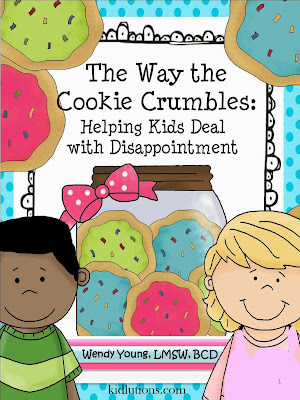Building Trust with Kids Who Are Hurting
Building Trust
It's not always easy to build trust with hurting kids.
They are hurting, after all, and for many of them, their basic sense of safety has been eroded by the very adults who were supposed to support and protect them. When those closest to them have failed to provide for their basic safety and well-being, it makes sense that they'd have a hard time trusting (or even listening to) other adults in their lives.
And their behavior shows it. It frustrates us, makes us feel like throwing our hands up in despair...and throwing in the towel.
It seems futile, at times, to put the effort forth, yet it is always worth it.
A Daunting Task
For teachers, this task can seem daunting...they're juggling the needs of 30 students (or more), trying to fulfill the mandates of the state, region and local governing bodies, trying to manage the classroom climate and hold the attention of students long enough to convey the knowledge they are trying to impart, trying to encourage critical thinking and application and extrapolation of concepts all while trying to accommodate the fact that some of those students have no desire or motivation to be there. Not even an ounce.
For Some, It's Just Survival
Many of these kids are doing their best to simply survive and get through the day. For those students, showing up is an act of courage. Putting one foot in front of the other is a victory and being in an upright position is a testament to their will to survive.
There's no room for ambition when you are worried about what will be happening when you return home, worried about whether your drug-addicted mother will end up in the ER again, worried about who's taking care of your little brother while you're at school, worried about whether you'll get a meal at all over the weekend, worried about whether your dad (who has a restraining order from coming near your home or mother) will break into your house again tonight and terrorize everyone, worried about whether glasses and pots and pans will be flying through the air while you're trying to eat the Ramen you microwaved for yourself for dinner for the fifth night in a row.
All Eyes on the Teacher
Some of those kids are sitting there in class, and have their eyes on the teacher, but their minds are anywhere but. They are living inside of their own heads, which is not always a great place to be, depending upon their life experiences and what's happening for them outside of the confines of the school building. These are the children of trauma, and they are showing up in greater and greater numbers over time.
Behavior Unbecoming
Some kids simply cannot "behave" within the parameters that are set as socially acceptable by society. But, consider this... it's likely because some of these kids haven't had experiences that are within the parameters that would be deemed socially acceptable, either.
Not. Even. Close.
No wonder their behavior is unbecoming.
Kids don't come to class with documentation that tells the whole story. Some of these kids have experienced horrors in their short lives that most of us couldn't even begin to fathom. Their stories are varied: being kidnapped and kept in hiding, sleeping in cars for days on end by an estranged parent who was trying to get back at their 'ex', being duct taped to a tree and held at gunpoint by a parent who was less than stable, fighting with siblings for the last crackers left in the cupboard, being kept up at night by the sounds of screaming by a parent being physically abused, being choked by an irate paramour of their mother, being near-drowned by their father, being physically, sexually or emotionally abused...day by day, until hope dwindles slowly until it quietly recedes into the darkness.
True Story
All of those are true stories of real kids. Ones whom I've locked eyes with through the years...whose stories were told little by little, piece by piece...over time...sometimes years. Of the thousands of kids who have passed through my office, some of them share a story...they are years apart and miles away from each other...but their stories are hauntingly similar. And, they survive. And some of them thrive...the lucky ones.
The Lucky Ones
The lucky ones came to believe they were worth saving because some adult didn't give up. Some adult invested time, energy and belief...belief that was stronger than the child's belief that they were undeserving. Belief that this child was worth it...worth the time, energy and trouble that it would take to hold out that belief until the child believed it himself.
Turning It All Around
It's not easy turning it all around for these kids. It takes years. But it's got to start somewhere. Why not you? Why not now?
5 Ways to Build Trust in the Classroom
According to the Brown-Skinner Model, published in the NATIONAL FORUM OF APPLIED EDUCATIONAL RESEARCH JOURNAL VOLUME 20, NUMBER 3, 2007, there are five components of building trust with at-risk students.
The Skinner-Brown Model to Build Trust
Listen
Validate
Problem-Solve
Positive Regard
Hope
You can read the in-depth version HERE. We hope you find it helpful. I know everything in it to be true. I also know there's more to the story! That's why there's BLOOM Brainsmarts!
In our BLOOM Brainsmarts 12-hour On-demand Training we provide detailed coverage of the steps a teacher, parent or clinician can take to work with hurting and at-risk kids. Our model is closely aligned with what Brown-Skinner proposed...not by intention (I just found this article today), but by what Dr. Lynne Kenney and I have observed to be true through years of clinical practice that was connected to educational settings!
Click image to learn more!
Save $100.00
Special Pricing is Available
Until September 1, 2017.
Not everyone can attend the training, we know. Still we want everyone to put their best foot forward when it comes to supporting all kids. If you could use a little help, or even a refresher on dealing with kids who are hard to reach, check out the article by Brown-Skinner or read up on misbehavior, challenging behavior or angry kids on our site.
An Expansive View
Our approach in BLOOM Brainsmarts takes an expansive view of both learning and behavior. We add the component of Professional Use of Self and Self-care that are essential and foundational pieces to make all of the above work!
Plus, we have a huge emphasis on brain-based learning, including: executive function, helping kids get ready to learn, helping kids plan, organize and execute plans, using "Musical Thinking" and so much more. We've put over 50 years of combined research into this training!
Come join the teachers, parents and clinicians already enrolled in this course. Thousands are already benefiting world wide from this information!
It's available for six more weeks, then it all goes away! Get your seat NOW, while you can!
Here's to a productive, joyful and meaningful year of learning for your students and for YOU!
Wendy Young, LMSW, BCD, is the founder of Kidlutions and co-author of BLOOM: 50 Things to Say, Think and Do with Anxious, Angry and Over-the-Top Kids. She is the creator of numerous workbooks and resources to help from the preschool through the teen years.
Follow her on Pinterest, Instagram, Twitter and Facebook! She'd love to see your smiling face there! Affiliate links may be used in this post. Please see our full disclaimer, located at the top of our page for more information.












Comments